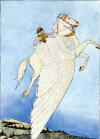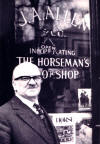1984 – Search Begins for Equestrian Wisdom
The Guild begins collecting newspaper and magazine articles about equestrian travel from sources around the world.
1994 – First Meeting of Long Riders
The Guild hosts the first meeting of Long Riders. DC Vision (right), who at the time was on a 14,000 mile journey through the United States, is in attendance. Unlike the modern horse world, with its focus on competition, commercialism and nationalism, the Guild is designed to be a mounted brotherhood. The Guild’s philosophy states that Long Riders believe equestrian travel has no frontiers, political or otherwise. It is the heritage of every nation. Though Long Riders individually originate in every imaginable country, they represent no specific nation. They will not be simplified by categories into sex, creed, allegiance to one horse breed or lines drawn on a map. They believe the definition of a Long Rider should be courage in the face of danger, resolve in the presence of hardship, and continual compassion for their horses. They are comrades of the saddle whose agreed-upon international language is "horse."
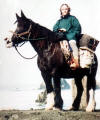
1995 – Locating Endangered Equestrian Books
The Guild enlists the aid of James Allen (right), London-based equestrian publisher, to obtain copies of every equestrian travel title available in any and all languages. The subsequent pre-internet search lasts years but results in the Guild acquiring the world’s most extensive collection of equestrian travel titles.
1998 – Documenting Humanity’s Equestrian History
The Guild creates the “Equestrian Travel Timeline,” which provides details about hundreds of Long Riders from 1697 to 2002.
2000 – First International Long Rider Meeting
The Guild holds its first international meeting, with Long Riders from three countries in attendance. At 95 years old, Marshal Ralph Hooker was the world's oldest equestrian traveller and the Guest of Honour. A Founding Member of the Guild, he made several record-breaking rides in the 1950s (right). Author of "Born out of Season," he is now deceased.
2001 – Historic Website Created
The Guild launches the first website dedicated to the protection, preservation and promotion of the ancient art of equestrian travel. With thousands of pages, and still growing, and having been visited by millions of people, the commercial-free website is the repository of the largest collection of equestrian travel information in human history.

2001 – Equestrian Travel Books Saved for Posterity
The Guild starts Horse Travel Books, which publishes more than a hundred equestrian travel titles in several languages, making it the world’s premier source of equestrian exploration wisdom. Included among the titles are "Tschiffely’s Ride”, the most influential equestrian travel book of the 20th century, and “Khyber Knights”, described as a “masterpiece” of modern equestrian travel literature. Because it donates the royalties from several of the titles to worthy causes, the Guild’s publishing efforts are acknowledged by HRH the Prince of Wales and Her Majesty, Queen Elizabeth.

2001 – Tribal Elders Located in Europe
CuChullaine and Basha O'Reilly, Founders of the Long Riders' Guild, are the first equestrian scholars to travel through Europe for the specific purpose of locating tribal elders of the equestrian travel community. They meet and interview fourteen equestrian explorers from six countries, including Jean-Louis Gouraud of France, Adnan Azzam of Syria and Jeremy James of Wales, all of whom join the Guild. Louella and Robin Hanbury-Tenison (right), who made five equestrian journeys and wrote many books about horse travel, become Founding Members. With Members in more than 40 countries, every major equestrian explorer alive today now belongs to the Guild, including Hadji Shamsuddin of Afghanistan, who rode 1,000 miles through that war-zone, Tim Cope of Australia, who rode 6,000 miles from Mongolia to Hungary, Claudia Gottet of Switzerland, who rode 8,000 miles from Arabia to the Alps and Vladimir Fissenko of Russia, who rode 19,000 miles from Patagonia to Alaska.
2002 – Eradicating Horse Travel’s Major Problem
The Guild endorses the Canadian adjustable pack saddle and undertakes a successful ten-year field test of the equipment. Long Riders report the pack saddle fits everything from a tiny Shetland pony to a gigantic Bactrian camel. As a result of its use, the humane equipment effectively eliminates saddle sores on pack animals.

2003 – Honouring Equestrian Explorers
A special meeting is held in London during which Gordon Naysmith (right), who rode 20,000 kilometres from South Africa to Austria, meets with Basha and CuChullaine O’Reilly to discuss the need to include the world’s equestrian travellers in the international exploration community. Though all three Long Riders are Fellows of the Royal Geographical Society, they realize this recognition has been denied to many great equestrian explorers. A meeting is arranged with the Director of the Royal Geographical Society, after which it is announced that the RGS has agreed that any Member of the Long Riders' Guild who has made an exceptional journey will be eligible to apply for Fellowship of the RGS via the Guild. This is an historic development for equestrian explorers as it marks the first time the physical courage demonstrated by Long Riders has been recognised by the most prestigious organisation of its kind. More than a hundred of these extraordinary Long Riders are subsequently made Fellows of the Royal Geographical Society, including Pedro Luiz de Aguiar, of Brazil, who at the age of seventy made an 18,000 mile journey across Latin America.
2003 – German-Speaking Long Riders Gather in Zürich
Long Riders from Austria, Germany and Switzerland attend a meeting in Zürich, Switzerland to celebrate the Guild’s release of the Wanderreiter Collection, the most noteworthy horse travel books written in the German language. Otto Schwarz (right) who rode 48,000 kilometres on six continents and put more miles under his saddle than any other Long Rider in the last century is honoured and his book, Reisen mit dem Pferd, is published by the Guild.
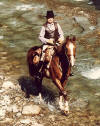
2004 – Exposing an Equestrian Deception
The History Channel requests help from the Long Riders’ Guild in determining the accuracy of tales told by a charlatan named Frank Hopkins. The Guild discovers and documents the “Hopkins Hoax,” the most extensive equestrian fraud in American history. When the Walt Disney Studio releases a movie based on Hopkins’ “true stories,” more than 80 academic experts join the Guild in denouncing the film “Hidalgo” as a blatant fabrication and a violation of the public’s trust.
2005 – Long Riders Meet in London
The Guild hosts the largest gathering of equestrian explorers in history when twenty-eight Long Riders from every corner of the world assemble in London. They meet at the Royal Geographical Society to witness the donation of more than 100 equestrian travel classics published by the LRG Press. Ten of the Long Riders present authored books in the collection.
2005 – Tschiffely Legacy Entrusted to Guild
Aimé Tschiffely (1895 -1954) is considered the most famous Long Rider of all time due to the legendary 10,000 mile solo journey he undertook from Buenos Aires to Washington DC in the 1920s. In 1975 Tschiffely’s widow passed control of Aimé’s literary estate over to Lady Jean Polwarth, who spent the next thirty years protecting and promoting the legacy. In 2005 Lady Polwarth bequeathed the Tschiffely Literary Estate to Swiss-born Long Rider Basha O’Reilly. In a ceremony held at Canning House in London, Lady Jean Polwarth (left) presents Basha O’Reilly (right) with the silver-encrusted riding crop that is a treasured icon of the estate.

2005 – Corporate Trickery Discovered by Guild
The Guild became alarmed when horses belonging to equestrian explorers were injured after being fitted with what was being billed as the “no sweat pad” saddle pad. The scandal was exposed when British Long Rider Keith Clark discovered the “saddle pad” lying in front of a Chilean supermarket, where it was being used in its original application as a door mat. An inquiry by Long Riders in five countries discovered that a 3M Corporation product known as “Wet Area Matting 1500” was being knowingly sold by the company to individuals who cut the coarse synthetic material into saddle sized pieces. The disguised floor mat, which 3M describes as being suitable for high traffic areas in sports centres, hotels and hospitals, was then remarketed as expensive saddle pads in the United States, England and Australia. When contacted by the Guild, a spokesman at 3M corporate headquarters admitted that the company knew horses were being injured by the misuse of their product. The Guild confirmed 3M’s deceptive practices when it discovered an advertisement (right) in the May, 1971 issue of Western Horseman magazine which promoted the 3M bath mat disguised as a saddle pad.
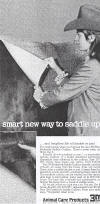
2006 – Guild Press Expands to Classic Travel
In an effort to preserve the great exploration classics from obscurity, the Guild opens Classic Travel Books. The project is endorsed by John Murray, whose family had published the world’s greatest travel books since 1768. Because the Guild’s publishing policy is designed to protect the environment, the CTB project is favourably reviewed by the Times of London.
2006 – Horse History Reveals Amazing Long Riders
The Guild completes an extensive effort to document journeys made by Historical Long Riders. The study, which begins with Kikkuli, who rode from the land of Mitanni in 1350 B.C., publishes details about hundreds of equestrian journeys from the past. A directory of these equestrian travellers includes such unsuspected Long Riders as Sir Richard Burton, Lord Byron, Charles Darwin (right) and Oscar Wilde. This research inspires the publication of an article regarding “The History of Equestrian Travel.”
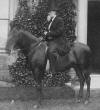
2006 – Guild Supports Creation of Statue Honouring “Little Long Riders”
Temple and Bud Abernathy were the most celebrated equestrian travellers of the early 20th century. In 1909 the tiny travellers, aged nine and five, rode from Oklahoma to Santa Fe and back alone. In 1910 they rode from Oklahoma to New York City, where they joined President Teddy Roosevelt and the Rough Riders in a victory parade witnessed by more than a million cheering New Yorkers. In 1911 they rode from New York to San Francisco without adult supervision. The Long Riders' Guild supported the creation of a statue (right) in Frederick, Oklahoma, hometown of the Abernathy brothers and Members of the Guild attended the opening ceremony.
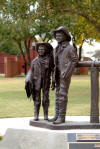
2007 – Long Riders Protect Equestrian Knowledge
To better serve the educational needs of the wider international equestrian community, the Guild creates the Long Riders' Guild Academic Foundation, a broad-based program designed to include a plethora of subjects ranging from history, archaeology, art, cultural studies, military, etc, to anything and everything related to mankind's links to the horse.

2007 – Guild Frees Captured Equine Traveller
After completing a journey along the ancient Tea Horse Trail from China, across Tibet and into India, English equestrian traveller Daniel Robinson (right) was arrested by the Indian authorities, who prepared to imprison him for ten years because of a simple visa violation. The Guild organized an international campaign to liberate Robinson, and with the help of British Horse Society President Noel Edmonds, freed the traveller from prison.
2008 – Articles, Interviews and Discoveries released by Guild
The Long Riders' Guild Academic Foundation (LRGAF) publishes ground-breaking research. Running Like Wildfire documents the worst equine health disaster in modern history. Professor John Borneman of Princeton University releases his investigation into Equestrian Tribalism. The American Quartermaster Museum provides hundreds of military documents in the Cavalry Blueprint Library. The Voices of Authority project interviews equine scientists, professors, authors, researchers, activists, editors and artists. Sidesaddles and Suffragettes (right) documents how women successfully fought for the right to vote and the right to ride astride.
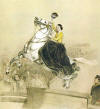
2008 – LRG Press Helps Defeat Amazon in ‘David versus Goliath’ publishing Battle
When Amazon.com attempted to establish a global monopoly designed to seize control of the world's Print-On-Demand publishing business, the Long Riders' Guild Press led a trans-Atlantic battle against the internet book-selling giant. To enforce this insidious crusade, any publisher who resisted Amazon's brutal offer to capitulate was punished by having their titles' "Buy Buttons" removed. One publisher alone had 70,000 books sabotaged in this manner. Such ruthless tactics frightened many publishers into reluctantly agreeing to participate in this act of corporate coercion.
The Long Riders’ Guild Press fought back. The Guild released an editorial entitled “In Defense of Literary Liberty,” helped organize a boycott of Amazon in Britain, issued a warning entitled “The Blood of Books” and supported the class action lawsuit filed by the publishing company, BookLocker.com. In a private email, BookLocker spokeswoman, Angela Hoy, contacted the Long Riders’ Guild Press to announce that in a stunning legal reversal Amazon had been defeated and agreed to an out-of-court settlement.
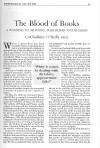
2009 – Guild’s Academic Foundation Publishes First Equine Writers’ Guide
Finding correct facts about horses, saddles, distances, etc. is increasingly difficult, which explains why the LRGAF routinely receives requests from authors in desperate need of truthful equestrian knowledge which they can incorporate into their work. To help encourage equestrian literary accuracy the LRGAF commissioned the creation of a precise and detailed Equestrian Writer’s Guide. Leading the project was author Susan Craft, who had incorporated the LRGAF’s equestrian advice into her own fictional work. Assisted by an international team of published, best-selling Long Rider authors, the result is an extraordinary set of equestrian facts, figures, distances and writing rules which reflect the honesty of true equestrian experience.

2009 – Long Riders Defend Mongol Horses
The Guild received an unsolicited email from an English company that specialized in enticing adventure-hungry tourists into paying large sums of money to race junk cars to distant national capitals. Though they lacked any equestrian experience, the company wrote to say they planned to launch the largest non-sanctioned endurance race ever attempted. Nearly a thousand Mongolian horses had been drafted to run in a thousand kilometre long race which deliberately flaunted international endurance racing rules. To ensure a hefty profit, the company had charged foreign contestants nearly $5,000 each to participate.
Alarmed at the company’s shocking disregard for safety and ethics, the Guild responded by explaining why the proposed event would result in injuries to the horses and riders. The company ignored the warning and instead released a public statement which bragged, "It's dangerous, it's unsupported and you could die."
The outlaw race created a fire-storm of protest, with editors, endurance racers, Long Riders and mainstream explorers, all joining their voices in an unprecedented condemnation of the dubious event. Canadian Long Rider Bonnie Folkins, two Mongolian Long Riders, and a group of Buddhist monks (right), presented a petition of protest to the President of Mongolia. As a result of the Guild’s actions, the Fédération Internationale Equestre in Geneva intervened and ensured that the race organizers provide veterinarian care for the horses.

2010 - LRG Flags Accompany Equestrian Explorers
The Guild has mentored or equipped Long Riders who have completed equestrian expeditions on every continent except Antarctica. This includes Kohei Yamakawa who completed the first modern equestrian journey across the nation of Japan; Michael Pugh who rode through Russia, Belarus, Ukraine and Romania; Günter Wamser who made a trans-continental ride across South, Central and North America; Billy Brenchley and Christine Henchie who rode across Tunisia, Libya, Egypt, Sudan, Uganda and Tanzania. Filipe Leite (right) was one of the Long Riders who carried the Guild flag on an extraordinary journey. In a show of international equestrian brotherhood, Long Riders from five countries helped Filipe prepare for his 10,000 mile journey from Canada to Brazil. This outpouring of generosity and support prompted Filipe to explain his feelings about being a Long Rider. “There is no competition. The horse unites us,” he wrote.
2010 – Long Riders Champion the Queen
Her Majesty Queen Elizabeth II is the Patron of the Royal Geographical Society. More than a hundred of the Long Riders are also Fellows of the RGS. When the Guild was informed that RGS leaders had removed the Queen’s portrait without the agreement or knowledge of the Fellows worldwide, the LRG sent a letter to President Michael Palin requesting that the Queen’s portrait be returned to its rightful place in the Council Chambers. “Unless the portrait is restored Long Rider Fellows from around the world will be invited to a press conference in London, wherein we call for the restoration of Her Majesty’s portrait. At the conclusion of this media event, journalists will be urged to accompany the Long Rider Fellows as we make our way on horseback from RGS headquarters at One Kensington Gore to Buckingham Palace, so as to deliver an apology to Her Majesty on behalf of the Fellows and Long Riders who did not authorize, nor approve, of the painting’s removal.” Her Majesty’s portrait was reinstated without delay.

2011 – His Holiness the Dalai Lama Honours Long Rider
After China invaded Tibet in 1949, George Patterson made a winter time ride across the Himalayas to seek help from the outside world. Patterson then helped the Dalai Lama escape from Lhasa; published fraudulent documents used by the Chinese to justify the invasion and filmed Tibetan resistance fighters battling communist troops. As a result, China sentenced Patterson to death in absentia, an order which was never rescinded.
After battling for Tibet’s freedom for more than sixty years, the Scottish Long Rider was in failing health when the Guild petitioned the Dalai Lama to recognise Patterson’s tremendous efforts. His Highness, the Dalai Lama, (left) authorized the Light of Truth Award to be bestowed on Patterson (right). This honour is reserved for individuals who have made significant contributions to the fight for human rights and democracy for the Tibetan people. Normally the award is personally presented by the Dalai Lama, but because of Patterson's poor health, Tibetan officials travelled to Scotland to present it to the ailing Long Rider. A Founding Member of the Guild and the author of "Journey with Loshay,” George is now deceased.
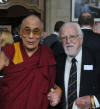
2011 – Horse History Safeguarded in Literary Collection
In an effort to promote indispensable books, the Long Riders Guild Press created the Equestrian Wisdom and History literary collection. Whisper on the Wind recounts the story of Tom Bass, the most celebrated African American horseman in history. Born a slave, Bass was able to transcend the race barrier because he was accounted the greatest horseman of the late nineteenth century. The first black American ever to ride in Madison Square Garden, in an age when racial segregation ruled the nation, Tom Bass was the mounted friend of five American presidents. The story had faded into oblivion until the Guild released a fascinating biography about America's most remarkable black horseman.
Deadly Equines (right) is a revolutionary departure from equestrian romance. It is a fact-filled analysis which reveals how humanity has known about meat-eating horses for at least four thousand years, during which time horses have consumed nearly two dozen different types of protein, including human flesh, and that these episodes have occurred on every continent, including Antarctica. Various sources of corroborating data, including legends, literature, cinema, news stories, scientific reports and eyewitness accounts are presented for the reader’s investigation. None of these items had been hidden. They were ignored, misinterpreted or, in some cases, censored. The result is the first exploration of the horse’s hidden history, an alternative equestrian world populated by forgotten facts, overlooked evidence and astonishing stories.
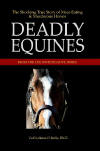
2012 - Protecting Our Endangered Heritage
The Guild joined forces with the German based VFD to encourage travelling with horses throughout Europe. The historic “Charter of Rights” created by the two organisations demonstrates how horse-humans from various parts of Europe have transcended the narrow definitions of "nationalism" and have joined forces to protect mankind's precious equestrian heritage.

2012 – Defending Equestrian Ethics
The Long Riders’ Guild is an equestrian honour society dedicated to protecting the horse from abuse, the public from being misled and the media from being deceived. George Beck (right) and his horse, Pinto, who travelled for a record 20,352 miles together, are the symbol of the Guild’s Code of Equestrian Ethics. Unlike the entrenched equestrian sports world, which often turns a blind eye to abuse and cruelty so long as it does not disrupt their income stream, the Long Riders’ Guild is intent on maintaining the highest ethical standards in the equestrian world. It encourages harmony between horse and human. Its mission is to care for the vulnerable and speak up for the voiceless. Admittance is never a foregone conclusion based upon the accumulation of mere miles.
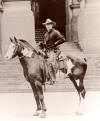
2013 – Extensive Long Rider News Archive Published
After collecting equestrian travel news articles for twenty years, the Guild placed its wide-ranging News Archive on-line. The unique historical reference tool is dedicated to the memory of American Long Rider Pat Schamber, a Founding Member of the Guild whose collection of news stories about Long Riders were of tremendous value.
2014 – LRG’s Academic Foundation Commissions Study of Lyme Disease
Like other Long Riders in Europe and North America Lucy Leaf (right) became a victim of an insect-borne health hazard that poses a danger to millions of horses and humans in dozens of countries. Lucy’s vital report, “Ticks and Travel – A Deadly Peril,” was the first equine travel study to document how ticks carrying Lyme Disease represent one of the most frightening threats faced by Long Riders today.

2014 – Guild Combats Cyber Stalkers
With the rise of the internet, cyber-stalkers began inflicting emotional harm to victims within the exploration community.
One such casualty was Swiss Long Rider Basha O’Reilly (right). An extensive study undertaken by the Guild documented how one cyber-stalking suspect misused his role as an Honorary Consul to elicit information under false pretences. The suspect also pretended to be an "investigative journalist," though he has never published anything except a few "Letters to the Editor." The Guild’s investigation explained how the suspect perpetrated an unprecedented international cyber campaign against explorers, their families and sponsors in many countries. As a result he has twice been investigated on charges of cyber stalking by Montana police; was questioned by the FBI and has been reported to the police in Europe and Australia. The Guild is working to organize an Exploration Cyber Resource Centre that will assist explorers and Long Riders who are being stalked or harassed.
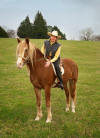
2015 – Long Riders Liberate Political Prisoner
The Guild was contacted by an Akhal
Teke breeder who provided evidence proving Geldy
Kyarizov had made a 4,300 kilometre equestrian journey. The Guild
was also told that Kyarizov was the victim of a vicious 13 year long
political persecution campaign carried out by the government of
Turkmenistan. The Guild named Kyarizov as the first modern Turkmen Long
Rider in June and ensured that he was instated as a Fellow of the Royal
Geographical Society. Kyarizov and his family were attacked by government
thugs in July and denied permission to leave the country. In response on
September 7th 2015 the Guild published an article entitled
“Divine
Horses and Political Injustice.”
The study documented how Kyarizov helped preserve Akhal Teke
horses. The Guild's study concluded with the following warning. "If
Turkmenistan continues to ignore its own laws and violate the rules of
humanity, the Long Riders’ Guild will urge the International Criminal Court
in The Hague to investigate President Berdymukhamedov on charges of
kidnapping, illegal confinement and violations of human rights. It will
place President Gurbanguly Berdymukhamedov in the Guild’s
Hall of Shame. It
will urge the international Akhal Teke community to boycott Turkmenistan and
refuse to attend the nation’s annual equestrian celebration. It will declare
Turkmenistan's horses to be symbols of political slavery "
Turkmen Long Rider Geldy Kyarizov (right) flashed the “V for Victory” sign
when he was freed one week later. News of Kyarizov’s release was shared with
the international equestrian community via an article entitled “Freedom
for Long Rider” published by the Horse Talk news service. The
international exploration community was informed by the Explorers’ Web news
service, who published the article “Long
Riders Liberate Horseman.”

2016 – Horse Travel Handbook Published
Created after decades of study by CuChullaine O’Reilly, Founder of the Long Riders' Guild, The Horse Travel Handbook is a cavalry-style manual drawn from its parent edition The Encyclopaedia of Equestrian Exploration. It is small enough to fit into a saddlebag and contains the most critically important information that a Long Rider may need to consult while travelling. The concise, easy-to-use book covers every aspect needed to successfully complete a journey by horse, including how to organize the trip, plan a route, choose the proper equipment and purchase horses.
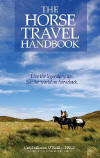
2016 – Long Riders Explore the World
New Zealand Long Rider Ian Robinson (right) completed the first modern equestrian exploration of Siberia, a feat last done by Cossack Long Rider Alexandra Kudasheva in 1913. The image shows Ian with his Yakut horse, Katchula. This marks the first time the Guild flag has been carried in Russia.
And American Long Rider Bernice Ende became the first person to complete an “Ocean to Ocean” ride in both directions. Bernice set off from her home in Montana. The team reached the Atlantic Ocean on October 8, 2015. After wintering over on the East coast Bernice resumed riding. She reached the Pacific Ocean in June. By the time she rode back to Montana, Bernice had been in the saddle for two and a half years and had ridden 8,000 miles.
2017 – Long Rider Honoured as a “Living Treasure”
The term “Living
Treasure”
designates those rare Long Riders who attained a high degree of mastery
regarding equestrian travel. Being accounted a Living Treasure means the
person is not only knowledgeable in a technical sense. This is an honour
extended to a handful of the Guild’s tribal elders, each of whom achieved
spiritual enlightenment during a difficult journey and then passed on their
traditional knowledge to a younger generation. To mark his 85th birthday,
Tex Cashner is the first Long Rider to be designated as a Living Treasure by
the Long Riders’ Guild.
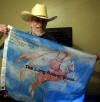
Long Rider Carries the Guild Flag 5,000 kilometres across Australia
Kimberley Delavere completed an extraordinary solo journey along the length of the Bicentennial National Trail.

“How to Ride in….” series created
A new collection of articles was begun. Each story provides important information on how to make equestrian journeys in different countries. Argentina, Australia, Mongolia and the United States were all included. English Long Rider Elizabeth Davies created the article entitled “How to Ride in Great Britain.”
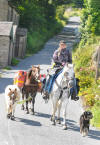
The three-volume Encyclopaedia of Equestrian Exploration is completed after seven years work. The most extensive study of equestrian travel ever created, the first and second sets of the Encyclopaedia were presented to Great Britain’s reigning monarch, Her Majesty, Queen Elizabeth II, and to the future king, His Royal Highness, Prince Charles, both of whom exerted a profound influence on the creation of the books.
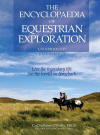
In an ironic twist of fate, Jing Li, the man who was known as “The World’s ‘Most Wanted’ Long Rider,” carried the Long Riders’ Guild flag to the Moscow headquarters of the Russian Geographical Society, thereby honouring the Russian roots of modern equestrian travel.

From ancient Scythians to modern Scientologists the horse has influenced religious events for 12,000 years. Ranging from Africa to Zoroaster, this study explains how divinities, messiahs, prophets, priests, pharaohs and peasants all shared one common thread throughout the flow of time – their uninterrupted love of the horse.
